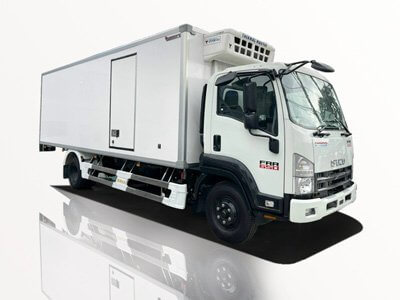Wildland fire engines play a critical role in firefighting efforts, specifically designed to combat wildfires in rural and urban interface areas. Among these, the Type 4 wildland fire engine stands out for its unique features and versatility. This article explores everything you need to know about the Type 4 wildland fire engine, from its specifications to its practical applications in firefighting.
What is a Type 4 Wildland Fire Engine?
The Type 4 wildland fire engine is a specialized vehicle designed for engaging wildfires in areas that may be challenging to navigate. These engines offer significant portability, allowing them to combat fires in remote locations. Here are some key characteristics:
- Water Capacity: Typically carries around 750 to 1,000 gallons of water.
- Pump Rating: Engine-driven pumps generally have a capacity of 100 to 250 GPM (gallons per minute).
- Drive Configuration: Four-wheel drive for robust maneuverability on rough terrain.
- Weight: Designed to fit the weight standards for quick transportation and reduced fire damage to the ground.
Specifications of Type 4 Fire Engines
Engine and Performance
The engine is the heart of the Type 4 wildland fire engine, affecting its overall performance.
| Specification | Details |
|---|---|
| Engine Type | Diesel Engine |
| Horsepower | 200 – 300 HP |
| Transmission | Automatic or Manual |
Water and Pump Systems
Water capacity and pumping efficiency are essential for effective firefighting.
| Specification | Details |
|---|---|
| Water Tank Capacity | 750 – 1,000 gallons |
| Pump Type | Fire Pump |
| Pump Capacity | 100 – 250 GPM |
Structural Features
Type 4 engines are designed with several structural elements that enhance their functionality:
- Crew Cab: Comfort for up to 5 firefighters.
- Storage Compartments: For tools, hoses, and personal protective equipment.
- Brush Guard: Protects the front of the vehicle from debris.
Applications of Type 4 Wildland Fire Engines
The Type 4 wildland fire engine is versatile and serves various roles in wildfire suppression:
Fire Suppression
These engines are equipped to deliver firefighting efforts directly, aiding in initial attack methods.
Initial Attack in Rural Areas
Efficient in reaching difficult terrains where larger fire vehicles cannot easily operate.
Support for Other Firefighting Equipment
Can be used alongside larger engines or helicopters for a systematic approach to wildfire management.
Best Practices for Using a Type 4 Wildland Fire Engine
Maximizing the effectiveness of a Type 4 engine involves adhering to specific best practices:
Pre-Fire Preparation
- Conduct regular maintenance checks.
- Ensure that all water and pumping systems are functional.
- Load all necessary firefighting equipment before deployment.
During a Fire Incident
- Follow established protocols for safety.
- Utilize strategic positioning for optimal water delivery.
- Coordinate with incident command for effective communication.
Post-Incident Evaluation
- Inspect the vehicle for damage or needed repairs.
- Review firefighting strategies employed and areas for improvement.
Challenges Faced by Type 4 Wildland Fire Engines
Despite their advantages, Type 4 engines face specific challenges that can impact their operation:
Territorial Limitations
While designed for rough terrains, some extreme environments may still pose operational difficulties.
Resource Constraints
Availability of water sources and fuel can limit the engine’s efficiency.
Coordination with Other Units
Efforts to communicate and coordinate with other firefighting units can sometimes be challenging, especially in chaotic situations.
Technological Innovations in Type 4 Fire Engines
Emerging technologies are transforming the capabilities of Type 4 wildland fire engines:
Advanced Pumping Systems
New systems allow for quicker deployment and more efficient water use.
Integrated GPS and Communication Tools
These enhancements provide real-time location tracking and streamline communication for better coordination.
Environmentally Friendly Options
Electric and hybrid fire engines are in development, aiming to reduce carbon footprints during firefighting efforts.
Cost Considerations for Type 4 Wildland Fire Engines
Investing in a Type 4 engine involves careful consideration of various cost factors:
Initial Purchase Costs
The average cost of a Type 4 wildland fire engine ranges from $150,000 to $300,000 depending on specifications.
Operational Costs
Includes fuel, maintenance, and repairs, which can accumulate over time.
Training Costs
Firefighting crews need adequate training on the operation and maintenance of these engines for effective use.
FAQs About Type 4 Wildland Fire Engines
What distinguishes a Type 4 wildland fire engine from other types?
The distinguishing factors include its weight, water capacity, maneuverability, and specialized design for wildland firefighting.
How many crew members can operate a Type 4 wildland fire engine?
A Type 4 engine typically accommodates up to 5 firefighters, ensuring sufficient personnel can operate the vehicle efficiently.
What type of terrain can a Type 4 wildland fire engine navigate?
These engines are specifically designed to traverse rugged terrains, such as steep hills and unpaved roads, making them ideal for wildland firefighting.
How does a Type 4 engine perform in urban interface scenarios?
Type 4 engines are well-suited for urban interface fires, providing quick access for initial attack and allowing easy navigability among structures.
Are there any new technologies being implemented in Type 4 wildland fire engines?
Yes, recent innovations include advanced pumping systems, GPS integration, and eco-friendly options aimed at improving efficiency and reducing environmental impact.
What maintenance is required for a Type 4 wildland fire engine?
Regular inspections, maintenance checks for the engine, water system, and pumping capabilities, along with timely repairs, are crucial for ensuring reliable performance.





